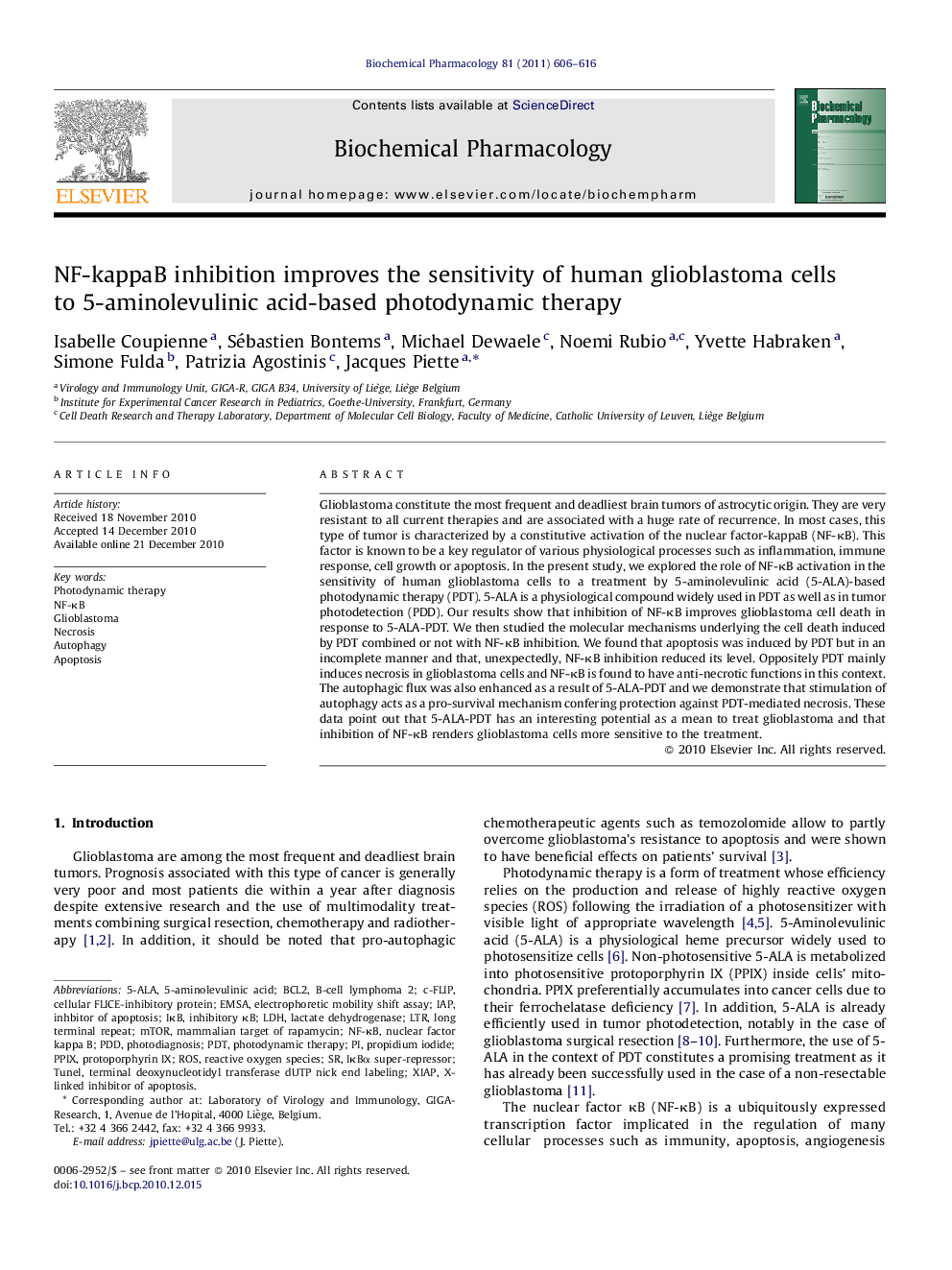| Article ID | Journal | Published Year | Pages | File Type |
|---|---|---|---|---|
| 2514184 | Biochemical Pharmacology | 2011 | 11 Pages |
Glioblastoma constitute the most frequent and deadliest brain tumors of astrocytic origin. They are very resistant to all current therapies and are associated with a huge rate of recurrence. In most cases, this type of tumor is characterized by a constitutive activation of the nuclear factor-kappaB (NF-κB). This factor is known to be a key regulator of various physiological processes such as inflammation, immune response, cell growth or apoptosis. In the present study, we explored the role of NF-κB activation in the sensitivity of human glioblastoma cells to a treatment by 5-aminolevulinic acid (5-ALA)-based photodynamic therapy (PDT). 5-ALA is a physiological compound widely used in PDT as well as in tumor photodetection (PDD). Our results show that inhibition of NF-κB improves glioblastoma cell death in response to 5-ALA-PDT. We then studied the molecular mechanisms underlying the cell death induced by PDT combined or not with NF-κB inhibition. We found that apoptosis was induced by PDT but in an incomplete manner and that, unexpectedly, NF-κB inhibition reduced its level. Oppositely PDT mainly induces necrosis in glioblastoma cells and NF-κB is found to have anti-necrotic functions in this context. The autophagic flux was also enhanced as a result of 5-ALA-PDT and we demonstrate that stimulation of autophagy acts as a pro-survival mechanism confering protection against PDT-mediated necrosis. These data point out that 5-ALA-PDT has an interesting potential as a mean to treat glioblastoma and that inhibition of NF-κB renders glioblastoma cells more sensitive to the treatment.
Graphical abstractFigure optionsDownload full-size imageDownload as PowerPoint slide
